Breakdance, also known as breaking, is a vibrant form of street dance that originated in the South Bronx during the early 1970s. As an integral part of hip hop culture, breakdance has evolved through the decades, gaining global recognition for its acrobatic moves, intricate footwork, and rhythmic beats.
From its underground beginnings to mainstream fame, breakdance has been shaped by cultural shifts and technological advancements. This exploration delves into each decade, tracing the dance’s journey from the 1970s to the present. We will uncover the stories, pioneers, and pivotal moments that have defined and redefined breakdance, highlighting its enduring influence and dynamic future.
The 70’s: the origins of breakdance
The early 1970s in the South Bronx, New York, saw the emergence of breakdance, which is believed to have originated alongside the rise of hip-hop culture. Recognized as the original and most popular hip-hop dance style, breakdance was created by local African and Latin-American youngsters in the area.
The story of breakdance begins with DJ Kool Herc, a disc jockey from the South Bronx who played at neighborhood block parties during the early 1970s. DJ Kool Herc would spin the “breaks” of soul and funk songs by artists like James Brown. These breaks are instrumental sections of a record featuring pure rhythm, percussion, and bass, devoid of vocals. DJ Kool Herc would isolate and loop these parts, encouraging partygoers to dance to these energetic segments.
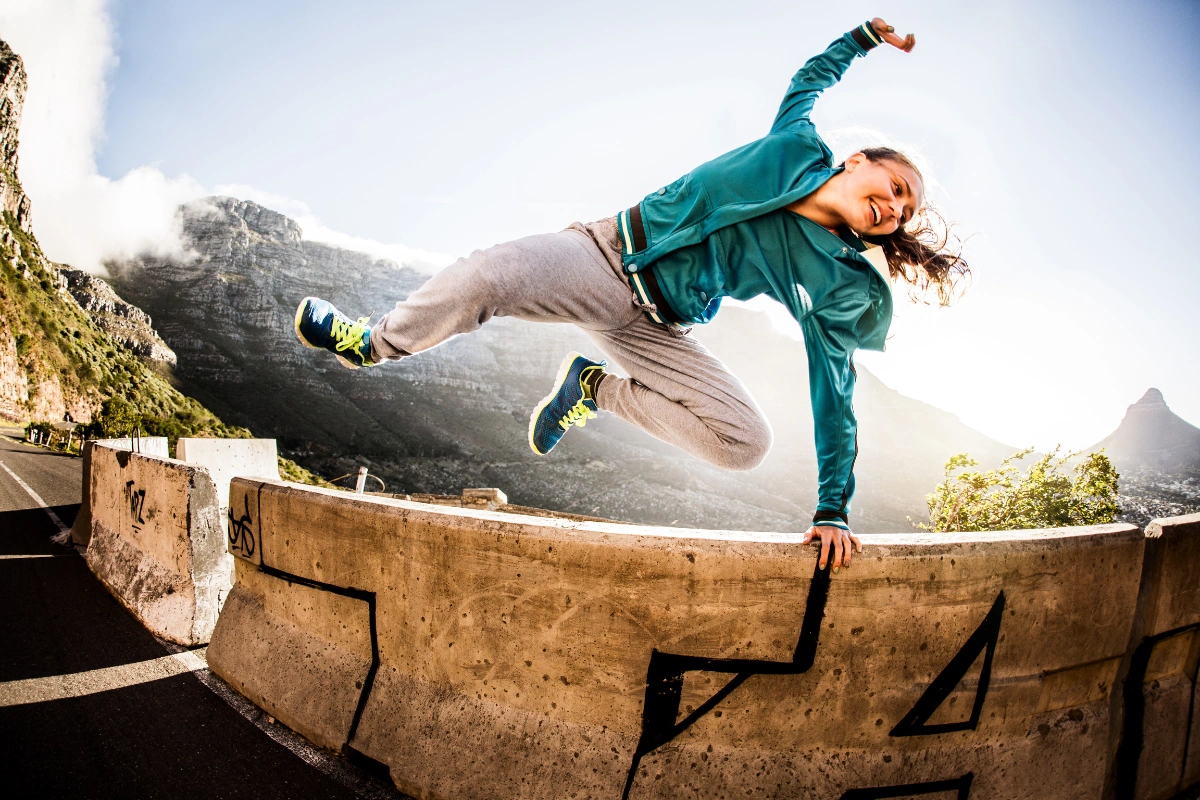
Many songs from African-American, African-Caribbean, and Latino artists featured these breaks, and during this time, slap fighting and mock sparring were popular pastimes. Youngsters would engage in slap fighting, feigning hits in a playful manner. From these playful slap movements, performed to the breaks played by the DJ, a dance move known as the “uprock” or “rocking” emerged. This move evolved, incorporating acrobatic elements like glides and spins, as local dancers in New York performed these routines to the breaks. This form of dance came to be known as “dancing to the break,” “breaking,” or, as the media later dubbed it in the 1980s, “breakdance.” Thus, a new dance style was born, with male dancers called b-boys and female dancers called b-girls, embodying the hip-hop lifestyle.
Meanwhile, in California, youngsters were experimenting with the robot dance and the boogaloo, which later evolved into a street dance style known as popping, pioneered by Boogaloo Sam and Poppin’ Pete. Don Campbell introduced another street dance style, derived from moves like the funky chicken and other popular dances of the time, which became known as locking.
As youths traveled between California and New York, they exchanged dance moves on the streets, leading to a fusion of these styles. It is widely believed that this exchange helped connect these dances. In the 1970s, popping and locking were grouped under the same umbrella as breaking, though today they are recognized as distinct dance styles.
Breakdance, initially a street battle dance, was also used in the 1970s to resolve rivalries between street gangs in New York’s suburbs. Members of each gang would compete to perform better moves, with a winner declared based on their skills.
Breakdance drew inspiration from various dance and movement forms, including the Brazilian fight-dance capoeira, kung fu, gymnastics, disco dance, and the lindy hop.
By the late 1970s, an iconic dance style was evolving. Although breaking had not yet hit mainstream media and commercial platforms, it was on the cusp of a significant breakthrough. Several dancers and crews laid the foundation for breakdance during the 1970s and early 1980s, including:
- DJ Kool Herc
- New York City Breakers (NYC Breakers Crew)
- Rock Steady Crew
- Dynamic Rockers Crew
- Crazy Legs
- Ken Swift
- Frosty Freeze
- Mr. Wiggles
- Tony Touch
- Mighty Zulu Kingz
- Mr. Wave
These pioneers helped shape and solidify breakdance as a cultural phenomenon that would eventually captivate the world.
Breakdance in the 80’s
Then came the 80s.
Although breakdance originated in the 70s, it didn’t gain mainstream recognition until the 80s. Here’s how that happened.
In the late 1970s, specifically 1979 and 1980, a breakdance crew called the Rock Steady Crew was formed in New York. By 1983, they released a song that would become an iconic, timeless record for breakers worldwide, titled “Hey You.” The accompanying music video featured now-legendary breakers such as Crazy Legs, Ken Swift, Buck 4, and Kuriaki, showcasing moves like the backspin, the windmill, and impressive footwork. This video was the first major music video to prominently feature breakdancing. “Hey You” peaked at number one on the Belgian and Dutch singles charts and reached the top ten in many other European countries, including the United Kingdom.

Also in 1983, the famous rap group Run DMC released the song “It’s Like That.” The iconic music video depicted two breakdance crews battling each other to Run DMC’s music, featuring moves like the flare, handstand, airbaby, and belly mills, a variation of the windmill. Through music videos like “It’s Like That” and “Hey You,” breakdance garnered its first international exposure, helping to ignite the breakdance culture in Europe and Southeast Asia in the early 80s.
The first glimpse of breakdance in a movie appeared on April 15, 1983, with the release of “Flashdance” in American cinemas. The film included an alley scene featuring dancers breaking, popping, and moonwalking, marking an iconic moment in breakdance history as the first Hollywood movie to expose breakdance to a global audience.
A year later, in 1984, two seminal breakdance-related movies were released. The first was “Breakin’,” a musical film that debuted on May 4, 1984. Inspired by the 1983 documentary “Breakin’ n Enterin’,” the movie was set in the hip-hop club Radio Tron in Los Angeles and showcased cool breakdance moves, as well as featuring the famous rapper Ice-T and early breaker and choreographer Shabba Doo.
Just a month later, on June 8, 1984, the classic film “Beat Street” was released. Set in the South Bronx, this American movie centered on breakdance and followed two brothers and their friends, who were all dedicated to various elements of hip-hop culture, including breakdance, rap, DJing, and graffiti.
With breakdance entering mainstream media through documentaries, movies, and music videos, it was rapidly becoming a cultural phenomenon. The dance style began spreading across the globe, with people in Korea, Japan, Germany, France, the United Kingdom, and the Netherlands starting to breakdance.
The United States, the birthplace of breaking, remained at the forefront of this movement. Crews like the Dynamic Rockers, the Rock Steady Crew, and the New York City Breakers paved the way for breakdance’s global expansion. The 80s set the stage for an exciting future for the art of breaking, promising a vibrant and dynamic decade ahead in the 90s.
Breakdance in the 90’s
Since breakdance massively gained popularity in the 1980s, the 90s marked a special decade of growth for the breakdance scene. During this period, the dance evolved significantly, with more people participating than ever before and the skill level of breakdancers rising rapidly.
Through television and radio, breakdance spread to other parts of the world. What began in the United States had reached countries such as France, England, the Netherlands, Japan, and Germany.
In 1990, a German breakdance enthusiast named Thomas Hergenröther established a breakdance competition in Germany called the “Battle of the Year.” This event was the first major breakdance battle in Europe and quickly became the largest international breakdancing competition at that time. Crews from all over the world were invited to showcase their skills, with the best selected for crew versus crew battles later in the competition. This international event provided a massive boost to the European breakdance scene, attracting breakers from across the globe.
During this time, crews like Aktuel Force from France, Battle Squad from Germany, and Flying Steps from Germany dominated the European breakdance scene, elevating the dance to new heights. However, towards the mid-90s, the breakdance “hype” appeared to be waning. It didn’t receive as much attention as it did in the 80s and early 90s. According to several old-school breakers, legends like b-boy Kwikstep, b-boy Storm, and Swift Rock helped keep the scene alive during these years. These b-boys are now considered some of the living legends of breaking.

In 1998, the Netherlands made a significant impact with their first major breakdance event. This event, known as The Notorious IBE (International Breakdance Event), is still held annually and is one of the most popular and long-running breakdance competitions in the world. Initially organized at Nighttown, a club in Rotterdam, this event celebrated all elements of hip hop and brought breakers from around the world together, growing larger each year. Footage from the first event showcases its early impact and growth.
Meanwhile, in the USA, breakdance remained a major cultural force with numerous battle events. Competitions like B-boy Summit and Miami B-boy Pro-AM brought together breakers in the 90s. Crews such as Style Elements, Soul Control, Renegades, Boogie Brats, Mighty Zulu Kingz, and Rock Force Crew were at the forefront in the United States.
Japan and South Korea also saw their breakdance scenes flourish. In South Korea, crews like Expression, People Crew, TIP, Gorilla Crew, and NY Crew dominated the local scene. In Japan, crews such as Spartanic Japan and the Waseda Breakers led the way.
By the end of the 90s, many countries had developed their own vibrant breakdance communities. The dance form continued to evolve, setting the stage for even greater developments in the years to come. The 90s were a transformative decade for breakdance, solidifying its global presence and paving the way for future innovations.
Breakdance in the 00’s
In February 2000, the Finnish rap group Bomfunk MC’s released a record and music video titled “Freestyler.” The video featured a teenager in a metro station who gains control over the movement of breakdancers through a remote control. The clip showcased dancers performing moves like the windmill, headspin, toprock, footwork, and waves. For many people born in the early and mid-90s in Europe, this video was their first introduction to breakdancing, sparking a new wave of aspiring breakdancers across the continent. In the early 2000s, breakdance was growing stronger than ever.
Major international breaking battles were being organized and introduced to the world. One of the most significant and influential battles in the United States was “Lords of the Floor,” first held in 2001. The iconic footage of this two-versus-two breakdance battle inspired b-boys and b-girls globally.
In Europe, the breakdance scene was rapidly expanding. In the Netherlands, the Notorious IBE held in Rotterdam’s Nighttown gained popularity every year in the early 2000s, attracting breakers from all over the world to compete in various categories.
France’s community also grew, with numerous battles in and around Paris and the south of France. In 1999, an organization called Style2ouf was founded, creating a community for the French breakdance scene.
The energy drink brand Red Bull, known for supporting the growth of extreme sports such as skateboarding, BMX, and snowboarding, decided to promote breakdance as well. In 2004, the first Red Bull BC One (Breakdance Championships) was held in Biel, Switzerland. The first Red Bull BC One was won by the American b-boy Omar. This event, which is still seen as the official 1-versus-1 breakdance championship of the world, created a significant spike in interest in breaking. It gave breakdancers the dream to “officially” become world champions, inspiring many breakers worldwide to improve and excel in the dance.
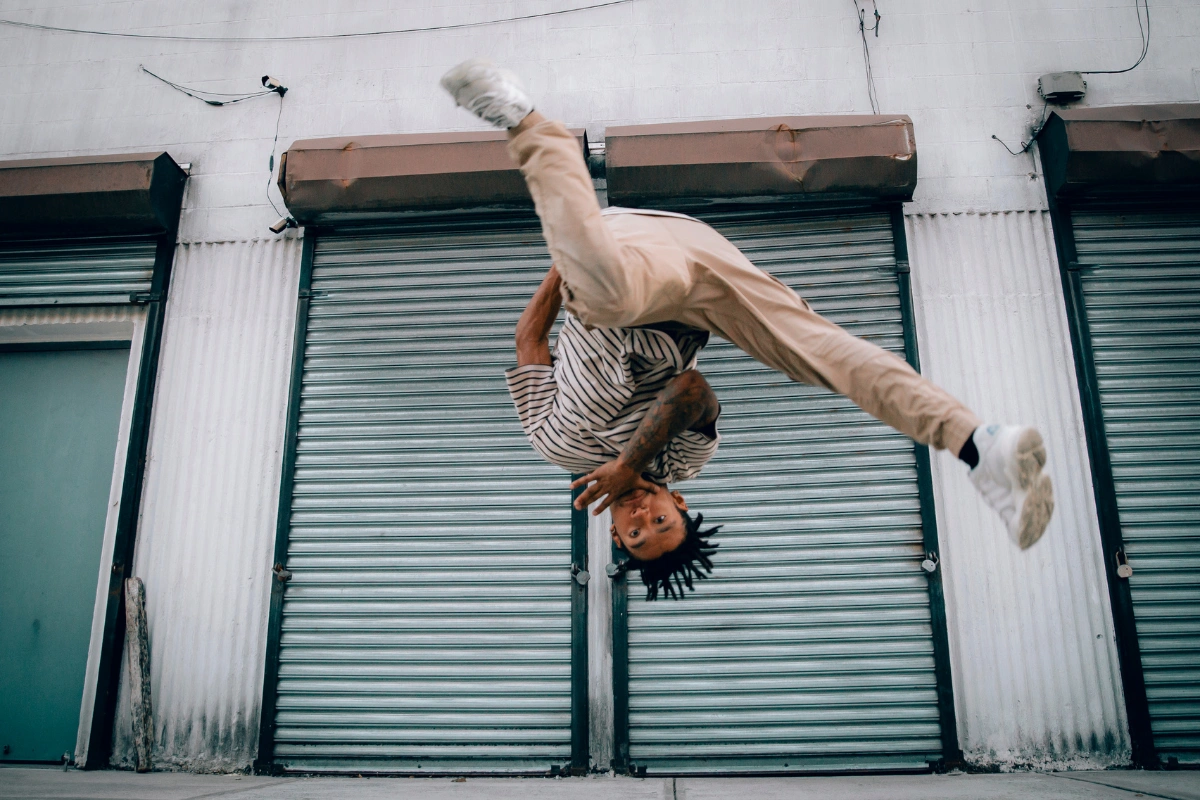
The internet’s development in the 2000s also significantly impacted breakdance. Previously, people had to buy VHS tapes or DVDs to watch breakdancing, but the rise of platforms like YouTube expanded the dance’s reach. One of the first breakdance videos on YouTube, uploaded in 2006, featured B-Boy Ivan versus B-boy Iron Monkey in a classic 1-versus-1 battle that inspired many to start breaking.
From the second half of the 2000s until 2010, breakdance was more popular than ever globally. With more breakdance battles organized than ever before, the dance’s popularity soared. Crews like Expression and Gamblerz from Korea, Pokémon and Vagabond Crew from France, Top 9 from Russia, Found Nation and Mortal Kombat from Japan, and Rock Force Crew, Knuckleheads Cali, Mind180, and Boogie Brats from the United States dominated the global breaking scene.
The 2000s were a pivotal decade for breakdance, marked by international competitions, influential videos, and the widespread adoption of the dance worldwide. This era set the stage for the continued evolution and growth of breakdance in the years to come.
Breakdance in the 2010’s
In the 2010s, breakdance had become an established dance culture worldwide, with numerous countries boasting their own breakdance event organizations and online communities. The biggest battles of the 2010s included The Notorious IBE, Red Bull BC One, Freestyle Session, Silverback Open, Chelles Battle Pro, Hip Opsession, BBIC Korea, UK B-boy Championships, and Battle of the Year. Many of these events continue to be organized to this day.
Watching breakdance battles on YouTube became the standard in the 2010s. This development was positive in many ways, as dancers could watch their favorite breakers whenever and wherever they wanted. However, it also had some downsides. The easy access to battle footage sometimes led to a lack of originality, as dancers began copying movements or even entire styles from their favorite breakers seen in YouTube videos.
Competitions were abundant, and breakdance could be found all over the internet, from social media to platforms like Vimeo and YouTube. The dance continued to grow throughout the decade, gaining significant exposure on these platforms. While some felt that the popularity of breakdance peaked during this period, the truth was more nuanced.
In 2018, breakdance made history by appearing at the Youth Olympics in Buenos Aires, Argentina. This milestone event sparked debates about whether breakdance is a sport or a dance, but its impact on the popularity of breaking was undeniable. The inclusion in the Youth Olympics brought breakdance into a new spotlight, expanding its reach and recognition globally.
Throughout the 2010s, breakdance was bigger than ever before, with significant developments and historic moments shaping its journey. The decade ended with breakdance poised for even greater achievements in the future, proving that its evolution was far from over. The fusion of traditional battle culture with modern technology and media ensured that breaking remained a dynamic and influential part of global culture.
Breakdance in the 2020’s
In the current decade, breaking seems to be poised for an exciting future.
Breakdance competitions are thriving worldwide. Despite the challenges posed by the COVID-19 global pandemic between 2020 and 2022, the breaking community adapted quickly, with online breaking battles gaining massive popularity. These virtual competitions kept the spirit of breaking alive, allowing dancers to showcase their skills and connect with a global audience from the safety of their homes.
A major milestone for breaking occurred in the fall of 2022 when it was confirmed as an official sport for the Summer Olympics in Paris 2024. This monumental announcement was a testament to breakdance’s growing recognition and global popularity. The decision to include breakdance in the 2024 Olympics was largely influenced by its success at the Youth Olympics in Buenos Aires in 2018, where it captivated audiences and demonstrated its potential as a competitive sport.
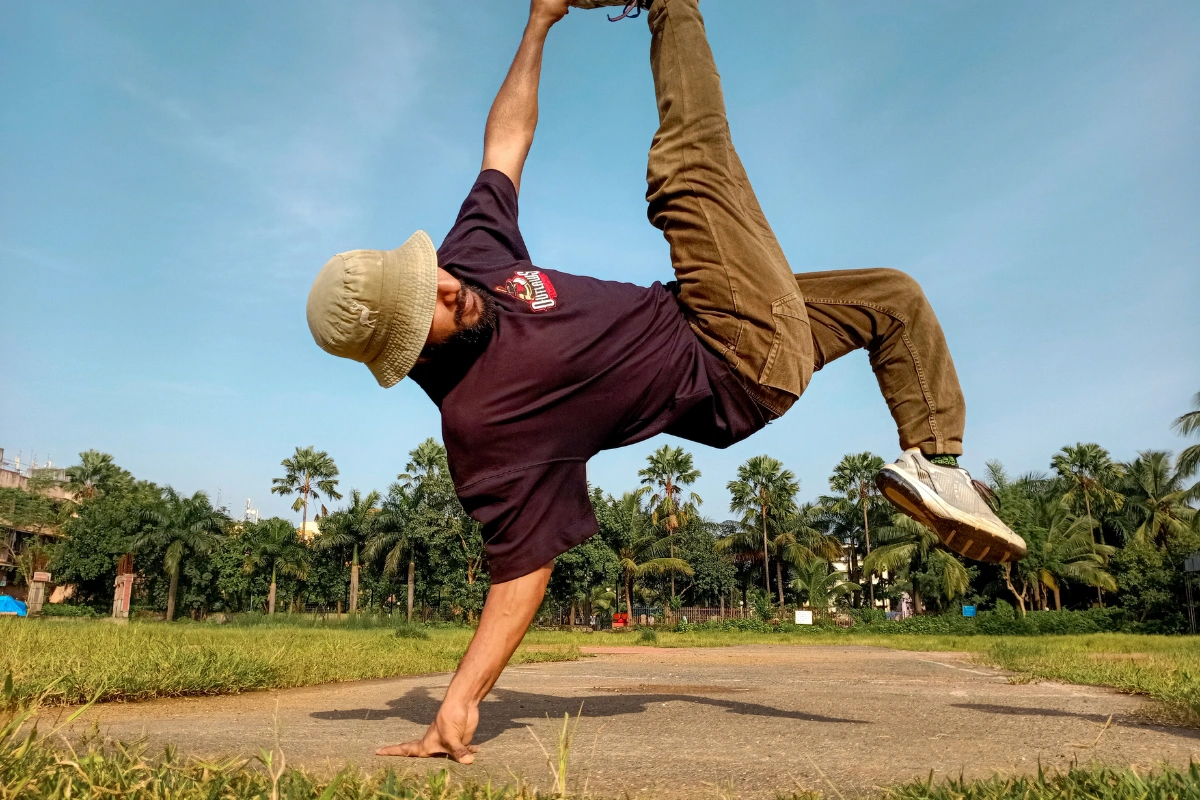
Looking ahead, breaking seems to have a bright future. The level of breakers around the world continues to rise, indicating that the dance is evolving. However, this evolution brings with it some questions. Many enthusiasts wonder if breakdance will maintain its essence as an “underground” dance artform, or if its incorporation into mainstream sporting events will alter its core identity. While breaking is now recognized as a performance sport, it is still perceived by many as a raw, expressive street dance.
The future of breaking is filled with potential. Will it continue to grow and reach unprecedented heights? Only time will tell.
Over the decades, breaking has seen many great dancers. To highlight some of the most successful breakers of the 2010s and 2020s, here is a list of modern breakdance legends:
- B-boy Hong 10 from South Korea: Known for his incredible power moves and technical precision, Hong 10 has been a dominant force in the breakdance scene.
- B-boy Menno from the Netherlands: Renowned for his creativity and unique style, Menno has won numerous international battles and is a respected figure in the breakdance community.
- B-girl Ami from Japan: Ami has made a significant impact with her powerful and dynamic performances, becoming one of the top female breakers in the world.
- B-boy Lilou from France: With his charismatic style and impressive battle record, Lilou has been a prominent figure in breakdance for years.
- B-boy Victor from the USA: Victor’s explosive moves and consistent performances have earned him a reputation as one of the best in the world.
- B-boy Thesis from the USA: Known for his smooth style and intricate footwork, Thesis is a celebrated breaker with a strong presence in the scene.
- B-girl Logistx from the USA: Logistx has quickly risen to prominence with her versatility and skill, making her a standout in the breakdance community.
- B-boy Taisuke from Japan: Taisuke’s dynamic and high-energy performances have made him a favorite among breakdance fans worldwide.
- B-girl India from the Netherlands: India’s powerful moves and strong presence have established her as a leading figure in female breaking.
- B-boy Neguin from Brazil: Neguin’s unique blend of capoeira and breaking has set him apart, making him a celebrated and influential dancer.
The 2020s are shaping up to be a defining decade for breaking, with the dance form continuing to captivate and inspire new generations of breakers worldwide.
Summary
Breaking is a dynamic street dance that originated in the South Bronx in the early 1970s as part of hip hop culture. Known for its acrobatic moves and rhythmic footwork, breakdance quickly evolved through the decades, gaining global popularity. Throughout its history, breakdance has been shaped by cultural shifts and technological advancements, maintaining its core as an expressive and influential art form.
Author Profile
Latest entries
 Break DanceOctober 20, 2024Master the Cha-Cha Slide
Break DanceOctober 20, 2024Master the Cha-Cha Slide Break DanceOctober 20, 2024The Ultimate Guide to Disco Dance
Break DanceOctober 20, 2024The Ultimate Guide to Disco Dance Break DanceOctober 20, 2024The Role of Creativity in the Sportification of Breakdance
Break DanceOctober 20, 2024The Role of Creativity in the Sportification of Breakdance Break DanceOctober 20, 202412 Popular Dance Styles
Break DanceOctober 20, 202412 Popular Dance Styles

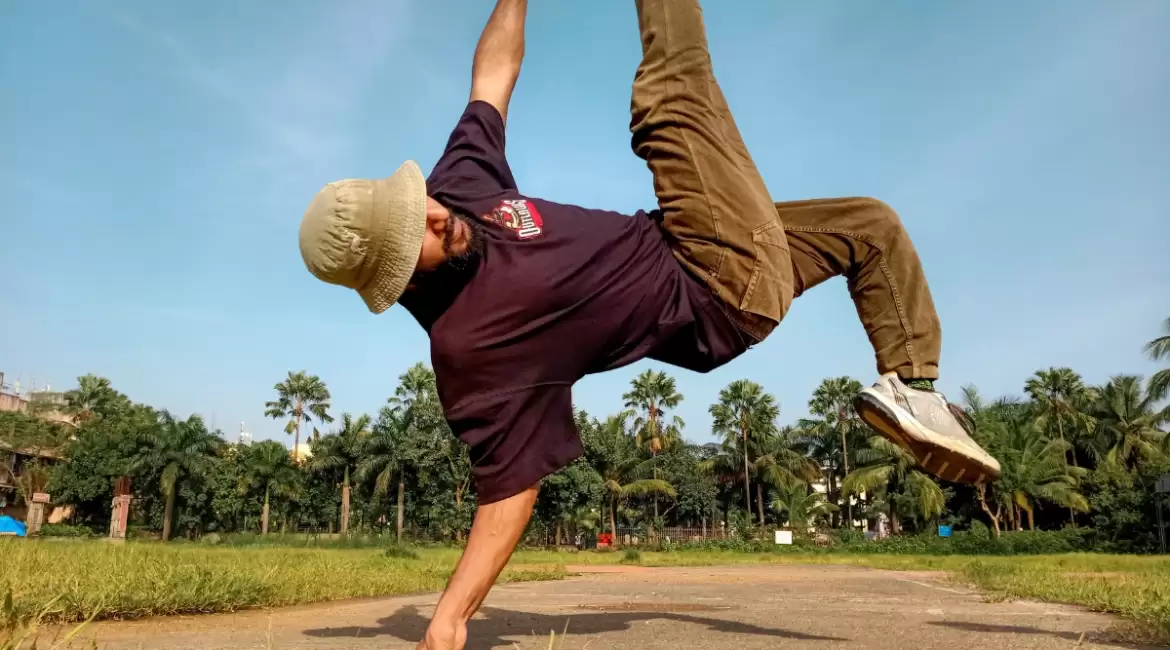


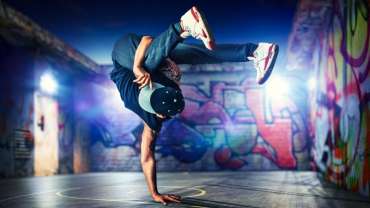

Leave a reply